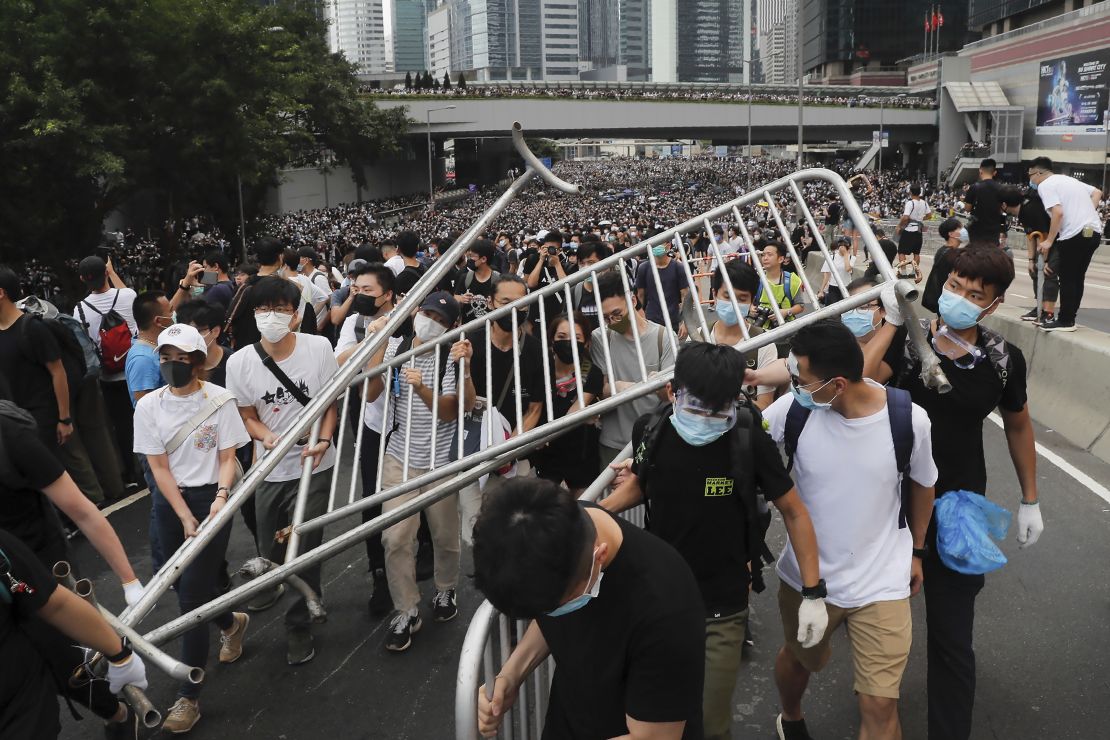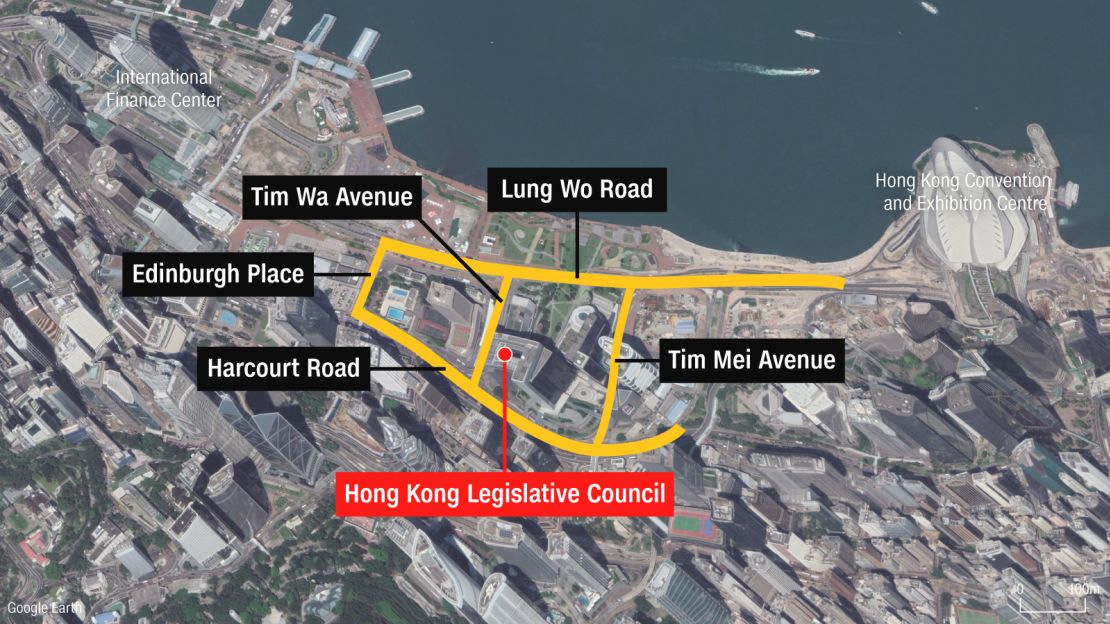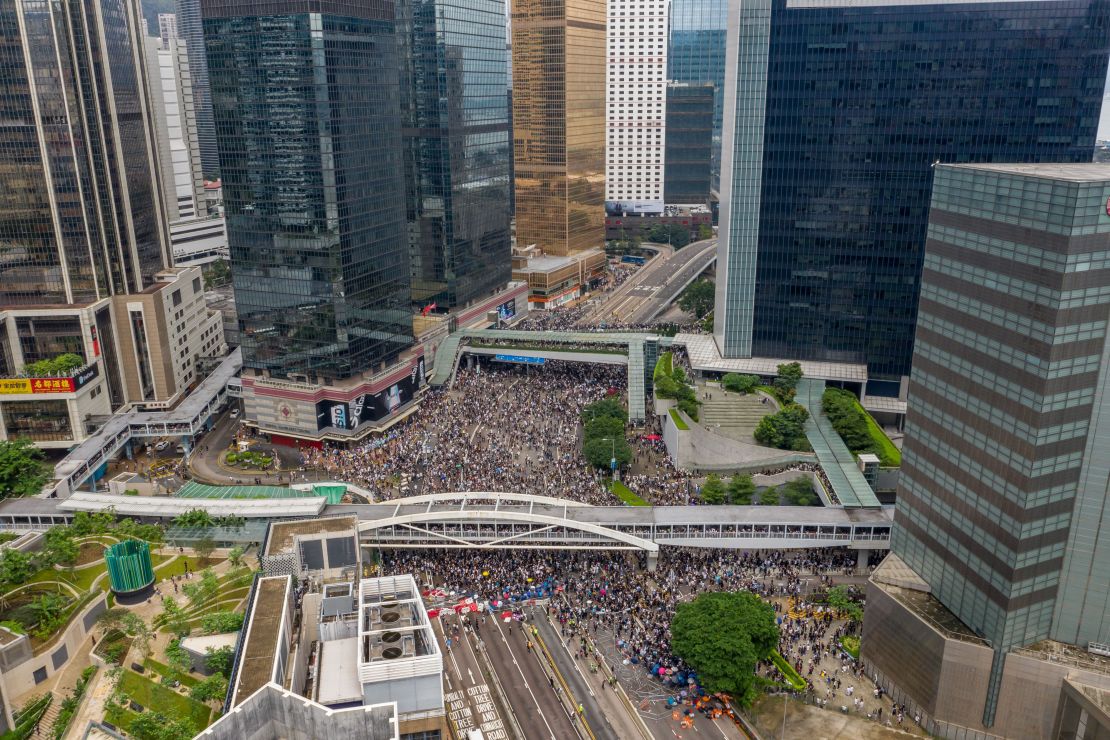Hong Kong protesters have, once again, seized control of part of the city.
Police and the government were completely wrong footed Wednesday morning, as thousands and then tens of thousands of mostly young protesters surrounded the city government headquarters – known as the Legislative Council – blocking roads and preventing lawmakers from going to work.
Those lawmakers were supposed to start the second reading of a hugely controversial extradition bill with China. On Sunday, according to organizers, more than a million people marched in protest against the bill, which has also been heavily criticized by business groups, human rights NGOs, and the international community.
Despite the huge turnout and opposition across a wide swath of society, it seemed there was little anyone could do to stop it. Protests were expected Wednesday but more as a display of anger and venting of frustration, rather than an effective blocking tactic.
The young protesters, most in their teens or early twenties, had other ideas, however. By noon, the protest had transformed into a redux of the 2014 Umbrella Movement.

“(This) boils down to a display of people power in Hong Kong, a display in particular of young people power,” opposition lawmaker Claudia Mo told the tens of thousands who had gathered outside the Legislative Council building.
“At the end of the Umbrella Movement, didn’t we say, ‘we will be back’? And now, we are back!”
With authorities forced to cancel Wednesday’s legislative session, and thousands still in the streets, Mo and other opposition lawmakers have called on the government to shelve the bill rather than risk an escalation into violence.
Even some supporters of the changes to the law have criticized the speed at which Chief Executive Carrie Lam is seeking its passage, bypassing normal procedure.
“Before Carrie Lam announces that the extradition bill is shelved we will not leave here,” said Shum Tsz-kit, convenor of the Civil Human Rights Front, which organized Sunday’s march. “We call on bigger companies, bigger organizations to support the strike, so all Hong Kong can come out and tell the world that we oppose the extradition law.”

Seizing control
After a tense but peaceful evening Tuesday, as thousands of protesters gathered around the Legislative Council building ahead of Wednesday’s meeting, it was unclear what, if anything protesters could do to break the impasse, amid a huge police presence.
Police, however, were focused on blocking entrances to the Legislative Council complex itself, and either didn’t have the resources or had not expected to have to prevent tens of thousands of protesters swarming into the roads.
That’s what they did in massive numbers, after a mass text message went out at 8 a.m. to a core group of protesters, who led others into the main highways passing the Legislative Council building carrying makeshift barriers, coordinating via shouts, megaphones and walkie talkies.
In less than 10 minutes, two main roads – Harcourt and Lung Wo – had been closed off to traffic. Attempts by police to push them back were unsuccessful, and they quickly retreated, except for those who had been deployed to guard the entrance to the legislature, now effectively trapped inside. Protesters set up large barricades using the fences that had been designed to keep them away, and reinforced them with cable ties and unfurled umbrellas.

Tense, angry scenes, during which police used pepper spray several times, gave way to a more relaxed atmosphere as it was announced legislators would not debate the bill Wednesday, with protesters reveling in a victory few thought was possible.
“A million of us chose to come out to fight the government because the government chose to make an evil law. But after that protest, the government still chose to push the evil law and ignore the voice of a million citizens,” said 18-year-old protester Sunny Chan.
“I think this is unacceptable and we are very upset and angry. So we choose to come out today and stand in the front and protest and try to protect our freedom.”

No options
Along the main Harcourt Road thoroughfare, now a traffic-free pedestrian area, there was a real feeling of being back in the Umbrella Movement.
Thousands of protesters sat around chatting happily, occasionally joining in with triumphant chants. As it reached midday, they were joined by many office workers from nearby buildings in Admiralty.
During the umbrella protests, the main Admiralty camp became something of a local tourist attraction, with many workers regularly having their lunches among the protesters, students doing their homework there, and artists and educators putting on displays and giving talks.
Multiple trade unions and around 350 small businesses have called for a work stoppage Wednesday to protest the law, though most on the streets appeared to be high school or university age.
The size of the crowd and the degree to which they are dug in presents a major dilemma for the government and police. Short of incredibly heavy-handed tactics that could spark an even larger backlash, it’s unclear what police could do to clear the roads.
During the Umbrella Movement, protesters held Admiralty for several months, before numbers and support had waned enough that police could go in and clear them.
Those protests began in September 2014, and their fifth anniversary is rapidly approaching. With protest leaders promising to remain in the streets until the bill is shelved, Hong Kong could be in for another summer of discontent.
CNN’s Ben Westcott and Eric Cheung contributed reporting.

















